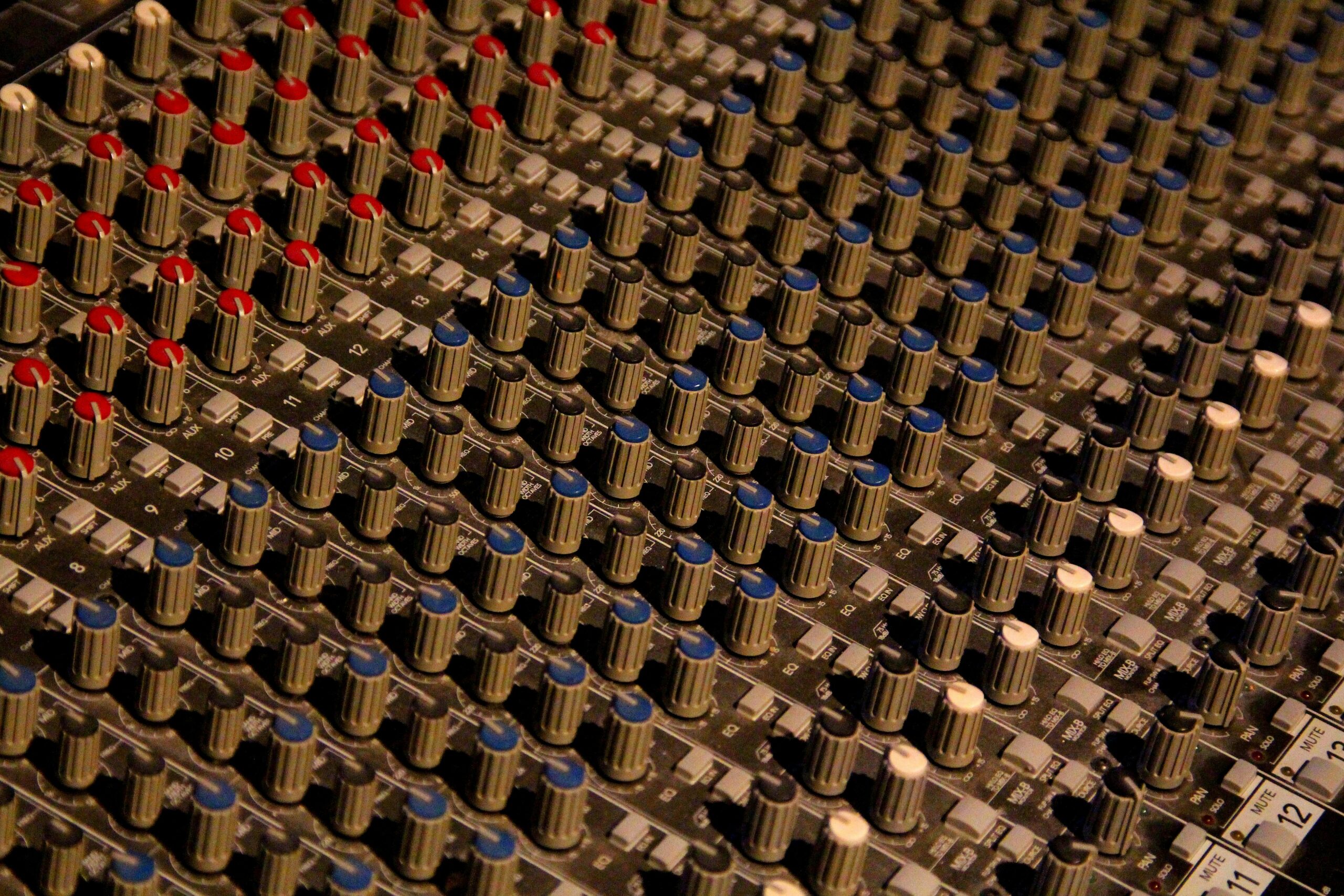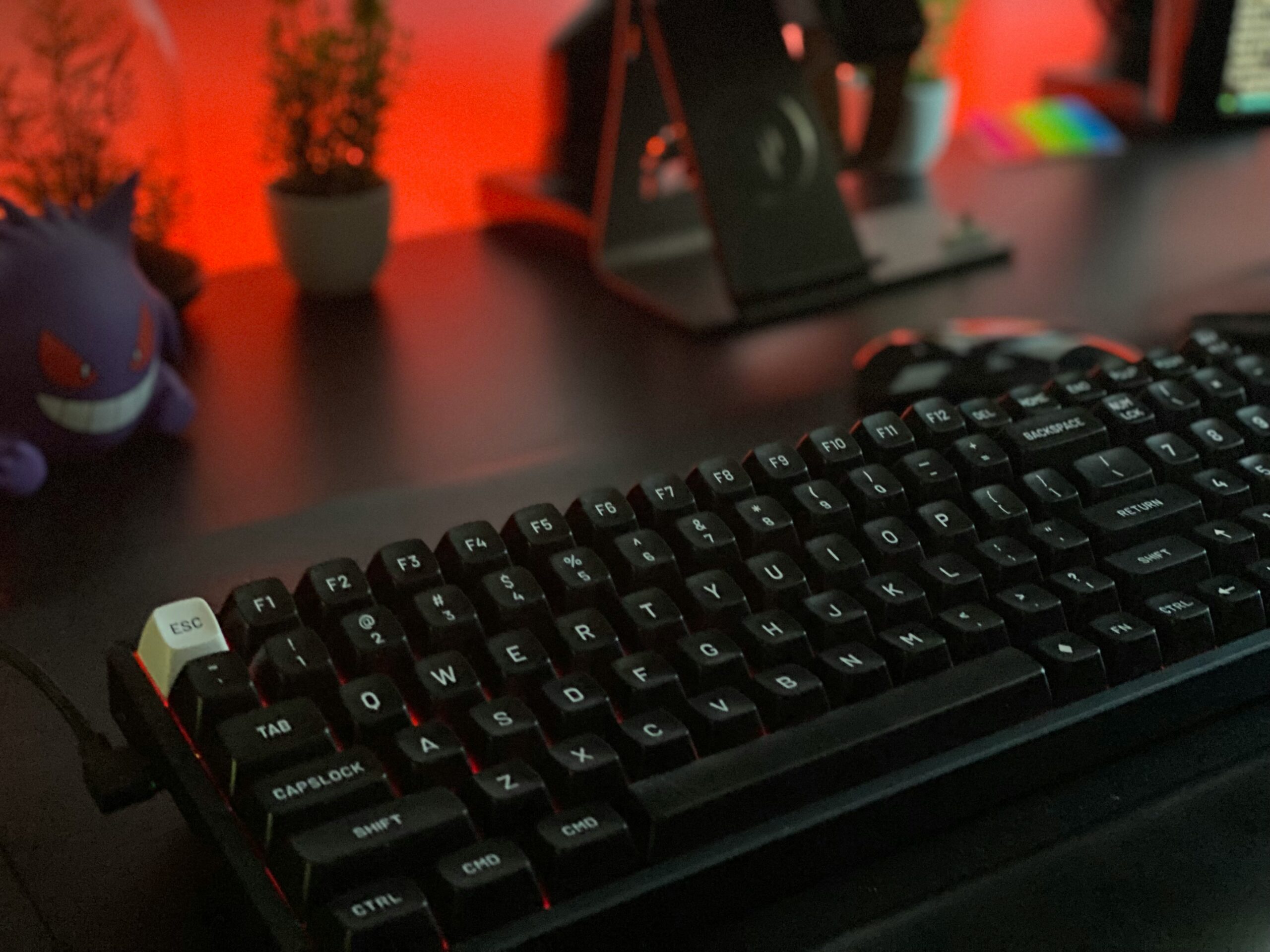Introduction to Adaptive Switches
Adaptive switches represent a vital component of assistive technology, designed to enhance the abilities of individuals with disabilities. These devices provide opportunities for increased interaction with the environment, allowing users to control various electronic devices, such as computers, wheelchairs, and communication aids, with ease. Adaptive switches come in diverse forms, tailored to meet the unique needs of users, ranging from simple button switches to more sophisticated systems that can respond to physical movements or voice commands.
The primary purpose of adaptive switches for disabled individuals is to facilitate communication and enhance their ability to perform tasks independently. For many users, traditional interfaces may be inaccessible due to limited mobility or other challenges. By utilizing adaptive switches, individuals can engage with technology, participate in daily activities, and express their thoughts and preferences more effectively. This empowerment greatly contributes to their overall quality of life.
In a broader context, adaptive technology plays a significant role in promoting inclusivity within society. As communities strive to create environments that are accessible to all, the implementation of adaptive switches is crucial in leveling the playing field for individuals with disabilities. These devices are not merely aids; they are transformative tools that foster independence and integration, enabling users to interact with their surroundings in meaningful ways. The significance of adaptive switches extends beyond their functional capabilities, reflecting a commitment to recognizing and supporting the diverse needs of all individuals.
By facilitating communication and independence, adaptive switches serve as essential resources in the journey toward inclusivity. As technology continues to evolve, the potential for adaptive switches to further enhance accessibility remains promising, paving the way for a future where individuals with disabilities can engage fully in all aspects of life.
Types of Adaptive Switches
Adaptive switches for disabled individuals come in various forms, each designed to cater to specific needs and functionalities. One of the most common types is the large-button switch. These switches are characterized by their oversized buttons, making them easy to activate for individuals with limited dexterity or those who may struggle with fine motor skills. Large-button switches are often utilized in communication devices and environmental control systems, providing a user-friendly interface for performing tasks or sending messages.
Another notable type is the sip-and-puff switch, which operates through the user’s breath. This innovative design allows individuals with severe mobility impairments to control devices by sipping in or puffing out air. This switch is particularly beneficial for individuals who have limited or no ability to use their hands. Sip-and-puff switches are prevalent in assistive technologies like powered wheelchairs and speech-generating devices, truly empowering users to communicate and navigate their environments effectively.
Touch-sensitive switches are also an essential component in the realm of adaptive technology. These switches can be activated by the slightest touch, making them suitable for users who may have some mobility but lack the strength to press a traditional switch. Touch-sensitive switches are versatile and can be integrated into various applications, including tablets, tablets, and specialized communication devices, enhancing the accessibility of technology.
Lastly, joystick controls serve as another valuable option among adaptive switches for disabled individuals. These controls allow for multidirectional movement and fine-tuned manipulation of devices, ideal for those who can use limited wrist or arm movements. Joystick controls are commonly used in gaming setups, powered mobility devices, and computer access systems, providing users an interactive and enjoyable experience regardless of their physical limitations.
The Benefits of Using Adaptive Switches
Adaptive switches for disabled individuals provide an array of benefits that significantly enhance their quality of life. One of the primary advantages is increased independence; these devices empower users to interact with their environment, operating various tools and technologies independently. By enabling control over computers, communication devices, and household appliances, adaptive switches facilitate day-to-day tasks that some may find challenging, thereby fostering a sense of autonomy.
Furthermore, adaptive switches enhance communication capabilities for individuals who may struggle to express themselves verbally or through conventional means. By integrating these switches with communication devices, users can engage in conversation, articulate their needs, and connect with family and friends more easily. This improved communication leads to stronger relationships and helps individuals feel more connected to their communities, thereby reducing feelings of isolation.
Quality of life is another critical aspect positively impacted by the use of adaptive switches. By reducing the frustration often associated with limited mobility or communication, these tools create a platform for users to engage in various social activities. Enhanced interaction not only improves mental health but also provides opportunities for socialization that may otherwise be unavailable. Children with disabilities, for example, can participate meaningfully in games and educational activities alongside their peers, contributing to a more inclusive environment.
In summary, the implementation of adaptive switches for disabled individuals has a multifaceted impact; it promotes independence, improves communication, and uplifts overall quality of life. The opportunities for social interaction and reduced frustration that these devices offer are indispensable for individuals striving for greater inclusion and engagement within their communities. As technology continues to evolve, the role of adaptive switches will undoubtedly grow, further empowering those who use them.
How to Choose the Right Adaptive Switch
Choosing the appropriate adaptive switch for individuals with disabilities requires a careful assessment of their unique needs. Several key factors must be considered to ensure the selected device aligns with the user’s capabilities and preferences. Firstly, identifying the type of disability is essential, as it significantly influences the range of available adaptive switches. For instance, individuals with limited mobility may benefit from larger switches that can be activated without fine motor skills, while those with some dexterity might prefer smaller, more sensitive options.
The level of dexterity remains a critical consideration. Individuals with varying degrees of motor control will find different switches more accessible. For instance, a person with minimal hand movement may require a switch that can be activated through other body parts, such as the head or knee. Others with better control might opt for fingertip switches that offer a tactile response. Therefore, understanding the user’s strengths and limitations is vital in guiding this choice.
Beyond physical limitations, personal preferences play a crucial role in the decision-making process. Users may have specific ideas about the size, color, or shape of the switch, which can affect their engagement and motivation to use the device. As such, including the individual in the selection process can help find an adaptive switch that resonates with their identity and lifestyle.
Furthermore, the importance of trialing different adaptive switches cannot be overstated. It is highly recommended to test out various types before final selection. This allows users to explore features and functionalities, ensuring they choose a switch that they find comfortable and easy to use. Engaging with professionals or therapists knowledgeable in adaptive technology can also provide valuable insights and support throughout this process.
Integrating Adaptive Switches with Technology
Adaptive switches for disabled individuals serve as a crucial interface between users and technology, enhancing accessibility and empowering independent use of various devices. The integration of these adaptive switches with modern technology has revolutionized the way individuals engage with their environments. By allowing users to control devices with simple actions, such as pressing a button or using a head movement, these switches can be a gateway to greater participation in daily activities.
Various devices, including computers, tablets, and smart home systems, can seamlessly incorporate adaptive switches. For instance, many operating systems now include built-in accessibility features that allow adaptive switches to function as input devices. Software such as Switch Access on Android and Switch Control on iOS enables users to navigate the interface using their adaptive switches. Furthermore, applications designed specifically for switch users, including text-to-speech programs and communication aids, enhance the utility of adaptive switches for disabled individuals.
In addition to traditional computing devices, adaptive switches can also be integrated into smart home technology. Systems like Amazon Alexa and Google Home can be controlled with adaptive switches, allowing individuals to manage their environment efficiently through voice commands or switch inputs. This technology not only fosters independence but also facilitates participation in household activities, which may have previously been challenging.
Moreover, the development of customizable software and user-friendly applications that work alongside adaptive switches continues to grow. Developers are increasingly recognizing the importance of accessibility and are designing tools that enable individuals with disabilities to adjust settings based on their specific needs. This ensures that adaptive switches for disabled users can be tailored to their preferences, enhancing their overall experience and autonomy.
Personal Stories: Transformative Experiences
The journey toward independence and empowerment for individuals with disabilities is often marked by significant milestones, and many of these milestones have been facilitated by adaptive switches for disabled individuals. These remarkable devices have not only improved accessibility but have also transformed lives in profound ways. One such individual, Sarah, a young woman with limited mobility, recounts how an adaptive switch enabled her to regain control over her environment. By using a simple button that operates her lights and entertainment system, she describes a newfound sense of autonomy that she once thought was lost. Sarah’s ability to invite friends over and control her space without assistance has significantly boosted her confidence and social interactions.
Another inspiring story comes from Jonathan, a person who has experienced challenges in communication due to his condition. With the use of adaptive switches, he can now express himself more clearly. Customized for his specific needs, these switches allow him to interact with communication devices seamlessly. Jonathan shares that being able to express his thoughts and emotions has enriched his personal relationships and enabled him to participate actively in conversations that were previously out of reach.
Additionally, Lisa, a caregiver for her son, emphasizes the impact adaptive switches have had on her family’s life. She highlights how these devices have allowed her son to engage with educational materials independently. By pressing switches tailored to his specific abilities, he can access information and explore topics of interest at his own pace. Lisa notes that this not only enhances his learning experience but also fosters his self-esteem and motivation to learn.
These compelling narratives illustrate the transformative effects of adaptive technology, demonstrating how adaptive switches for disabled individuals serve as a gateway toward greater independence and empowerment. The personal stories shared exemplify how these devices can dramatically alter lives, providing individuals with opportunities they deserve.
Challenges and Limitations of Adaptive Switches
Adaptive switches for disabled individuals play a significant role in enhancing communication and aiding daily tasks, but they are not without their challenges and limitations. One of the primary concerns is the cost associated with these devices. High-quality adaptive switches can be expensive, making them less accessible for families and caregivers. Even with insurance coverage, there can still be discrepancies that result in out-of-pocket expenses that many cannot afford.
Additionally, the customization required for adaptive switches presents another hurdle. Each user has unique needs based on their specific disabilities, which means that a one-size-fits-all approach is rarely effective. Tailoring an adaptive switch to meet individual requirements can be a lengthy and complex process, often necessitating the involvement of specialists. This customization not only increases costs but may also lead to delays in obtaining the necessary equipment.
Technical difficulties also plague the use of adaptive switches for disabled individuals. From software bugs to hardware malfunctions, these issues can disrupt communication and daily functioning, leading to frustration and diminished independence for users. It is crucial for both the users and their caregivers to be tech-savvy and able to troubleshoot these devices, which can be a barrier for some individuals.
Finally, proper training is essential for users and caregivers to maximize the benefits of adaptive switches. Without adequate training, the potential of these devices may not be fully realized, and users may become discouraged, resulting in decreased usage. It is important to invest time and resources into comprehensive training programs to ensure that both users and their support networks can effectively utilize adaptive switches and overcome the challenges they may face.
Future Trends in Adaptive Technology
As technology continues to evolve, so too does the landscape of adaptive devices designed to assist individuals with disabilities. In particular, the future of adaptive switches for disabled persons presents numerous promising trends and innovations. The integration of emerging technologies such as Internet of Things (IoT) devices, advanced sensors, and user-centric design principles paves the way for more intuitive and responsive adaptive switches.
One significant trend in the development of adaptive switches is the application of artificial intelligence (AI). AI can enhance the functionality of these devices by making them more responsive to user needs. For instance, machine learning algorithms can analyze user behavior, preferences, and physical capabilities to customize switch settings, maximizing accessibility and ease of use. This personalization can lead to improvements in user engagement and satisfaction, making adaptive devices even more essential in daily life.
Additionally, advancements in materials science promise to yield adaptive switches that are not only more durable but also lighter and easier to manipulate. Innovations in touch-sensitive technology may allow for switches that respond to the lightest touch or even gesture-based interactions, which could open up new avenues of accessibility for individuals with various disabilities. Coupled with customizable design options that cater to different user strengths and limitations, adaptive switches can be tailored to suit individual preferences and improve overall user experience.
Furthermore, as societal awareness of inclusivity grows, there is a push for developing adaptive devices that are not only functional but also aesthetically pleasing. Companies are increasingly looking to integrate adaptive switches for disabled individuals seamlessly into everyday environments, reducing the stigma often associated with assistive technology. By focusing on design, usability, and tech integration, the future of adaptive switches is poised for transformative progress that encourages independence and enriches the lives of people with disabilities.
Resources and Support for Users of Adaptive Switches
Accessing adaptive switches for disabled individuals can often be a daunting task due to the various options available and the complexities involved in choosing the right device. Fortunately, there are numerous resources and organizations dedicated to assisting users and their families in navigating the available support systems. Below, we outline several key resources that can provide valuable information and assistance.
One notable advocacy group is the ABLEDATA project. This resource offers comprehensive information on assistive technology and adaptive switches, with detailed product descriptions and user reviews, making it easier for families to make informed choices. They serve as a bridge between users and manufacturers, ensuring that individuals can discover innovative products suited to their specific needs.
Additionally, organizations like The National Institute of Child Health and Human Development offer funding programs and grants that can support the purchase of adaptive switches for disabled individuals. These programs provide financial assistance to families, easing the burden of cost while ensuring that users can eventually access necessary technology.
The online community also provides essential support through forums and discussion groups, such as Reddit’s Disability Community and Disability.gov. These platforms allow users to share their experiences and recommendations regarding adaptive switches, fostering a supportive network through lived experiences.
Furthermore, training programs available through local rehabilitation centers or educational institutions can significantly benefit users and their families. Familiarizing oneself with adaptive switches for disabled individuals through hands-on training can enhance usability and increase confidence in operating the devices.
By utilizing these resources, individuals can better navigate the complexities surrounding adaptive switches, leading to improved outcomes in their daily lives.



